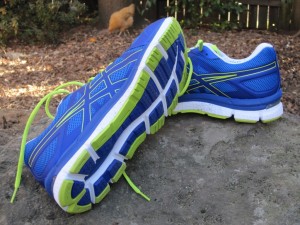Are Your Running Shoes Ruining the Planet?
Last week, there was a flurry of stories on the environmental impact of a pair or running shoes.
The UK Guardian’s headline of Running shoes leave large carbon footprint, study shows, was pretty typical.
The MIT study found that the manufacture of a pair of Asics Gel Kayanos produces 30 pounds of CO2 emissions.
The study also found that most of these emissions came from the manufacturing process rather than the sourcing of the materials. Since billions of running shoes are sold each year, there is certainly reason and room to improve.
But this does raise the question of whether this is something runners should worry about. If you are not wearing running shoes, the odds are good that you will be wearing some other type of shoe with it’s own set of environmental impacts.
If you do chose to worry about this and are wondering what you could do to off-set the environmental impact of your running shoes, you could start by considering car-pooling to your next race or group run.
Burning two gallons of gasoline–driving an average gasoline car from Sacramento to Folsom and back–will produce approximately the same amount of CO2 emissions as the manufacture of those shoes you’re going to run in. (Driving a 25 mpg vehicle for 50 miles produces 28.2 lbs CO2.)
If you really want to make a big dent in your carbon footprint, change your diet. Even small reductions in meat and dairy consumption can have gigantic impacts.
According to the Environmental Working Group’s Meat Eater’s Guide to Climate Change and Health:
If everyone in the U.S. ate no meat or cheese just one day a week, it would be like not driving 91 billion miles – or taking 7.6 million cars off the road.
This is still a fraction of what is needed to bring the planet back into some sort of carbon balance, but it’s something and certainly more relevant to most of us than trying to change Chinese manufacturing processes.


awesome post. I think running shoes are the least of concerns when it comes to leaving a carbon foot print. however if people are concerned, there are donation programs that are available so people can continue to use old running shoes rather than them being tossed.
1I think the running shoes are the least of our worries. I’m more concerned with all the swag given at events that may end up in the trash. Some of the events I run now have the option of “no shirt” with a reduced entry fee and they don’t hand out water bottles. Some triathlons are trying to be greener as well by reducing the amount of goodies in the swag bag.
2John:
Great article. Your listing of priorities agrees with mine, which might account for some of your brilliance. 🙂
3We need to pick our battles.
4